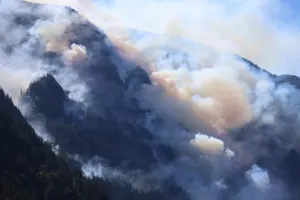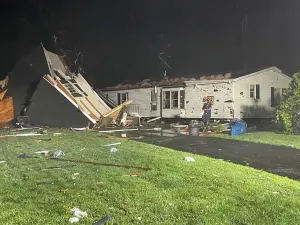
Record-high number of endangered blood-shooting lizards found in Alberta
About the size of a chicken wing, Alberta's only native lizard species lacks protection from predators — so they shoot blood out of their eye sockets.
And earlier this week, as part of an annual search for the endangered blood-squirting reptiles, the Nature Conservancy of Canada (NCC) found eight greater short-horned lizards in southeastern Alberta.
MUST READ: If humidity is not your friend, here are 5 things to try
It's the highest record of the species the NCC has ever found.
"I don't think we've ever found more than two or three.… So to be able to find that many — it's pretty incredible for us," said Megan Jensen, NCC's natural area manager for southeastern Alberta.
"There's just a profound sense of gratitude to be able to see something that a lot of people don't even realize exists."
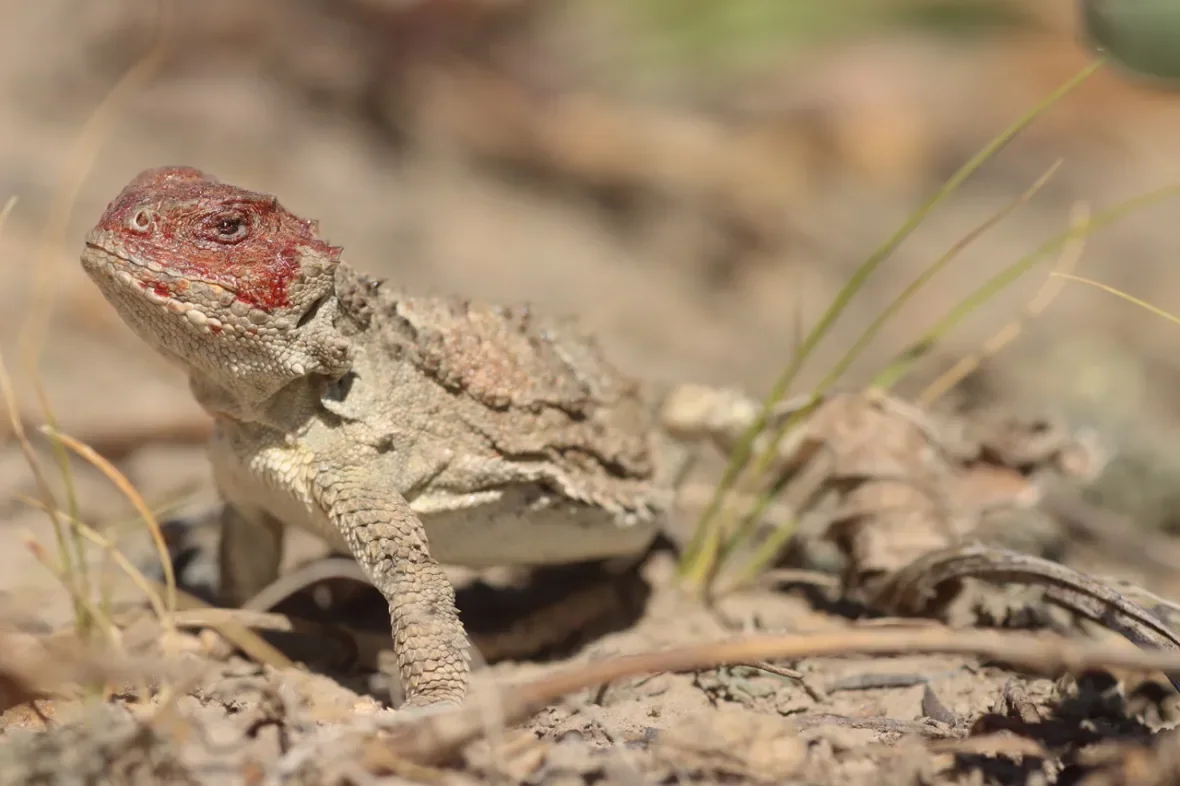
Bloodstained short-horned lizard captured earlier this week. Alberta naturalist Chris Fisher says lizard researchers who have seen over 500 of this species across Alberta and Saskatchewan have never observed this. (Chris Fisher)
Greater short-horned lizards are found in isolated areas in Alberta and Saskatchewan. They live in areas with loose soil and rely on grasslands, one of Canada's most immediate endangered areas.
Jensen says the light brown reptiles depend on the fact that they look like soil and can blend into their surroundings to protect themselves from predators, like birds and coyotes.
But their main defence mechanism? They shoot blood out of their eye sockets when they get picked up by predators.
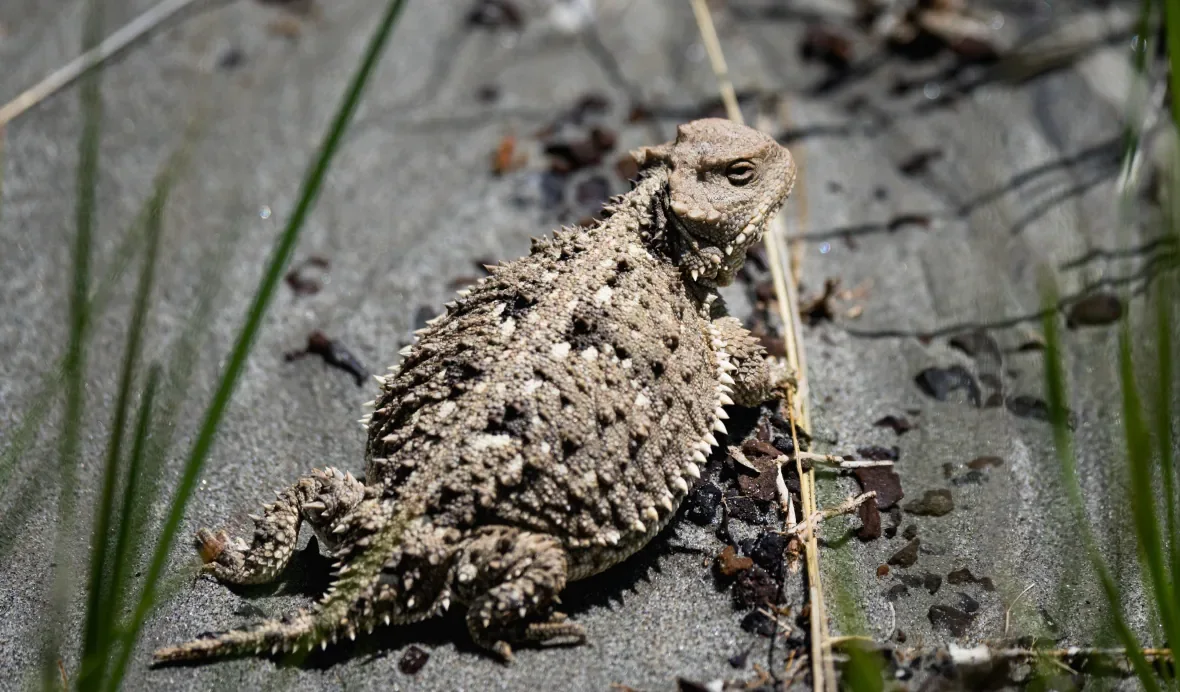
Greater short-horned lizards are often called "horned toads" due to its appearance. (Nicholas Carbol)
"It's really disgusting tasting, so some of the species will drop them and that will save them from demise," said Jensen.
Annual search for the cryptic species
Each year, the NCC applies for permits from the government and organizes searches — what they call "surveys" — to find the endangered species in its natural habitat.
She says the lizards are only found in very limited areas that can be subject to habitat loss.
This year, the search team included six interns and two managers, including Jensen. They searched a property managed by NCC.
"You spread out over the entirety of the hill and the bottom of the hill and you kind of just do a sweep for them," she said.
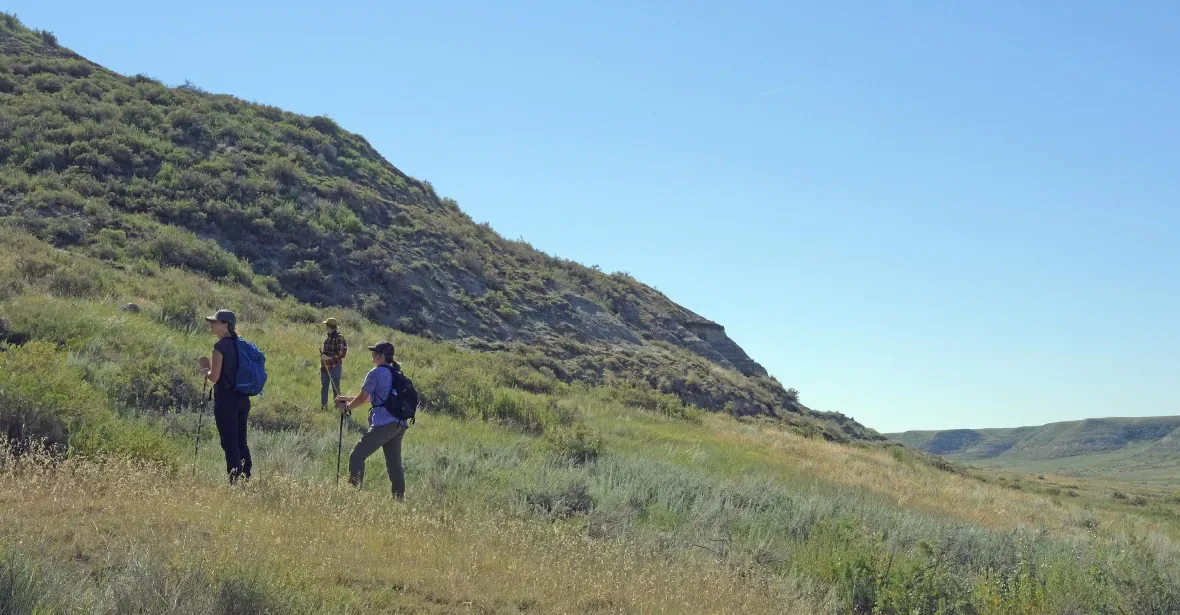
The NCC team searching for greater short-horned lizards in southeastern Alberta. (Nicholas Carbol)
After searching for four hours in 35 C temperatures, they found eight greater short-horned lizards.
"We are very lucky to have a good team of interns helping us out that day."
One of those interns was Ania Marcus. Originally from Toronto, she's interning for NCC in partnership with another program called the Canadian Conservation Corps.
She found one of the eight lizards on Monday.
"It was definitely very rewarding because it is a lot of just, like, searching around because it's very, very hard to find them," said Marcus.
Marcus says she was surprised to learn that she was allowed to hold the lizards, and they're smaller than she expected.
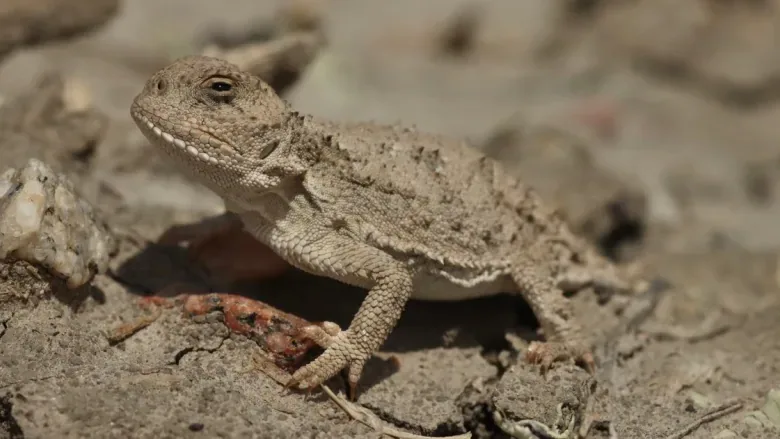
One of three short-horned lizards Chris Fisher has seen in 2022. (Chris Fisher)
"It was pretty cool to go out and be able to see a species that is so rare firsthand. I felt like that was a very special experience."
Bloodstained lizard photographed by Alberta naturalist
Naturalist Chris Fisher says it's "absolutely phenomenal" that the NCC was able to come across eight greater short-horned lizards in a span of four hours.
He's been searching for the lizards in Alberta and Saskatchewan for over 30 years. This year, he says he's seen three lizards in Alberta.
"But only three lizards in a calendar year is a spectacular count for Alberta … Even once in a lifetime is a notch in the belt of a seasoned Alberta naturalist," said Fisher.
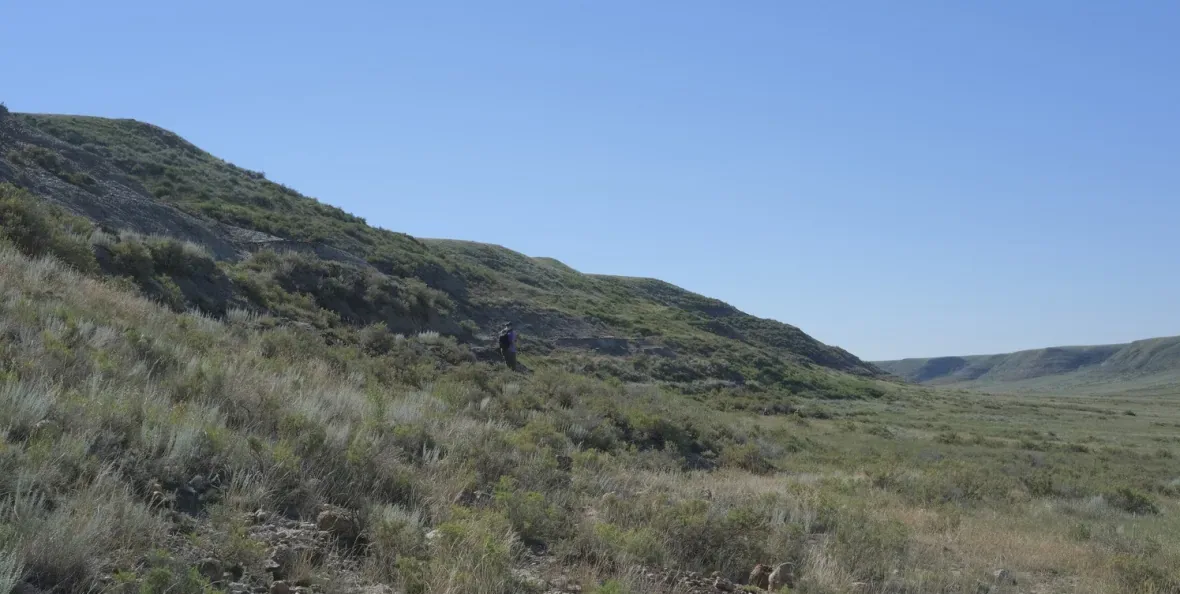
The area NCC interns were searching for greater short-horned lizards on. (Nicholas Carbol)
Just a few days ago, he saw one darting around on the Badlands, and it caught his attention as there's very few other signs of life in that environment.
He noticed that its head was red and thought it was unusual, so he got close and took photographs of the red-headed lizard.
"Upon assessing the images later, I was fascinated to learn that I perhaps was the first to photograph, in Canada, evidence of the legendary blood squirting defence from the eyeballs of short-horned lizards."
Fisher says it looked a little bit like a warrior from the Middle Ages.
"It was really a once in the lifetime opportunity for me."
WATCH: This invasive lizard is taking over Vancouver Island, why it's a concern
Protecting the habitat of short-horned lizards
Today's critically endangered grasslands ecosystems were once a dominant ecosystem in North America, but over 90 per cent of that land has been lost for agricultural and industrial uses since the country was colonized, says Fisher.
Short-horned lizards are relegated to "just a pinprick of space," usually in around Badland areas in the extreme southeast of Alberta.
Fisher says very little of this habitat remains, so he's an ardent supporter of NCC's conservation work.
"It's just wonderful that the Nature Conservancy is targeting some of these areas in their research and their land agreement areas."
Jensen says NCC is going to continue working together with ranchers, landowners and other industry members to conserve these areas and the species within them.
She says there's still a lot to learn about short-horned lizards, so they'll continue to monitor for them in the future.
"We need to keep working together as a team and keep doing what we're doing to provide that habitat for them," said Jensen.
The story, written by Karina Zapata, was originally published for CBC News.






